Where fashion meets interior design.
23.10.2025They last barely fifteen minutes, but their images are seen around the world. Fashion shows are a media spectacle, and they feature a multitude of design aspects – from textile design and sound to stage architecture, scenography, lighting design and the design of the invitation cards. This diversity is one of the reasons why the Vitra Design Museum decided to stage “Catwalk – The Art of the Fashion Show” in collaboration with V&A Dundee, the Scottish Design Museum. The result is a fascinating exhibition that illuminates the history and cultural significance of the fashion show, from its early forms around 1900 to the present day. It brings together examples from fashion houses such as Azzedine Alaïa, Balenciaga, Chanel, Dior, Gucci, Maison Martin Margiela, Prada, Viktor & Rolf, Louis Vuitton, Yohji Yamamoto and many others. Original collection pieces, film and photographic material, stage objects and invitations bring over 100 years of fashion history on the catwalk to life.
The fashion show as a total work of art
The exhibition focuses on the fashion show as a total work of art. What once began as an intimate presentation in Parisian salons has developed into a global event in which architecture, scenography, choreography, lighting, sound and props merge into a multi-layered narrative space.
The exhibition consists of four rooms designed in the style of different eras, tracing the central stages of the fashion show – from the couture salon to experimental prêt-à-porter formats and the classic catwalk to contemporary digital performances. It becomes clear that fashion shows always reflect body images and social changes, and that it is worth asking about the motives behind the shows: What myths, values and dreams are being negotiated? What stories are being told, what power structures are being depicted? What does a fashion show say about the collection on display – and what about the time in which it was created?
Four rooms – four eras
The first room shows the beginnings of the fashion show in the early 20th century, when fashion was mostly presented to a select clientele in studio houses.
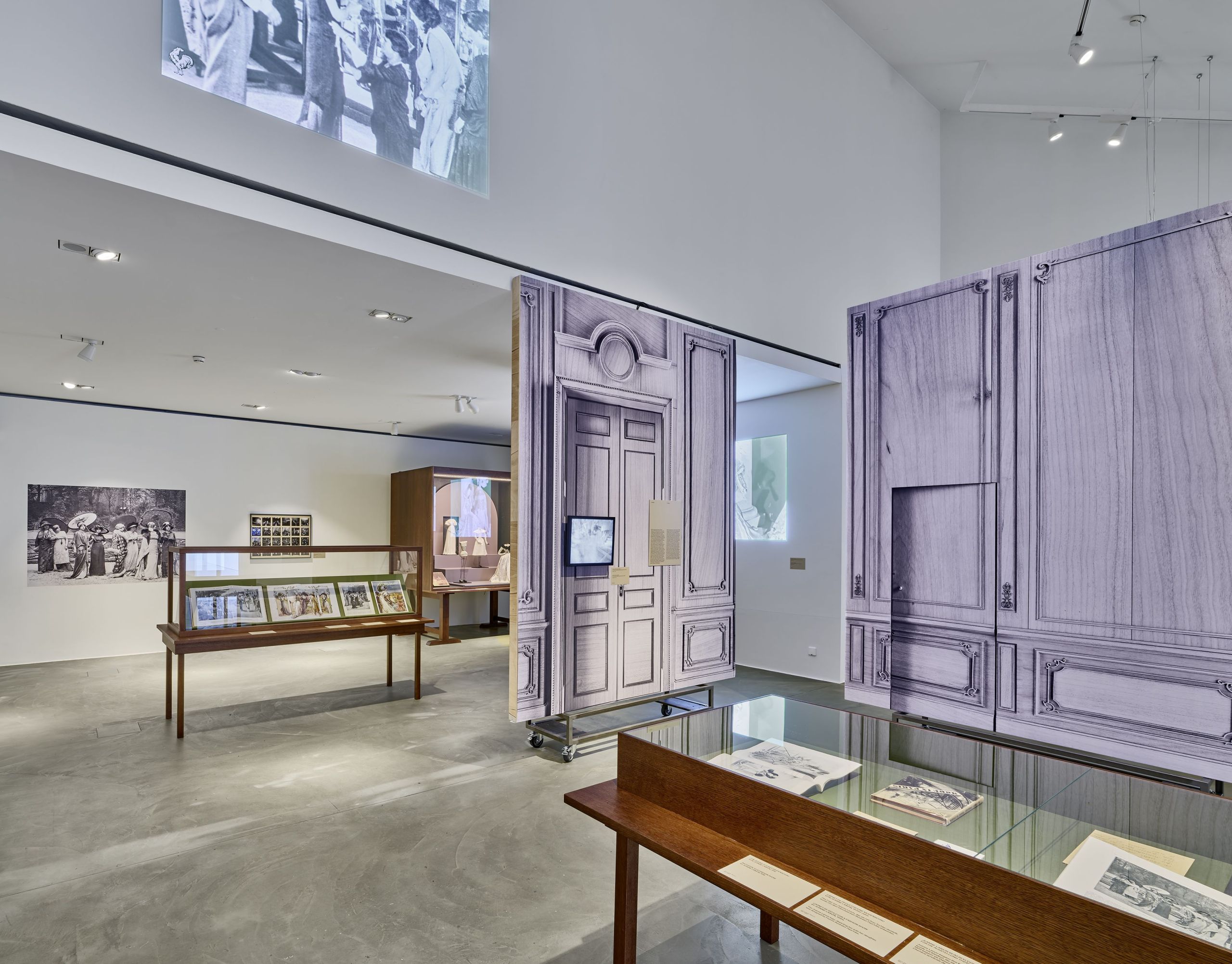
Film documents and ephemera are used to introduce the protagonists of this era, such as Charles Frederick Worth, who was one of the first to have fashion presented by real women rather than mannequins. Lucile and Paul Poiret, on the other hand, linked the presentation of fashion with storytelling, while Coco Chanel had her models descend dramatically down a mirrored staircase into the salon.
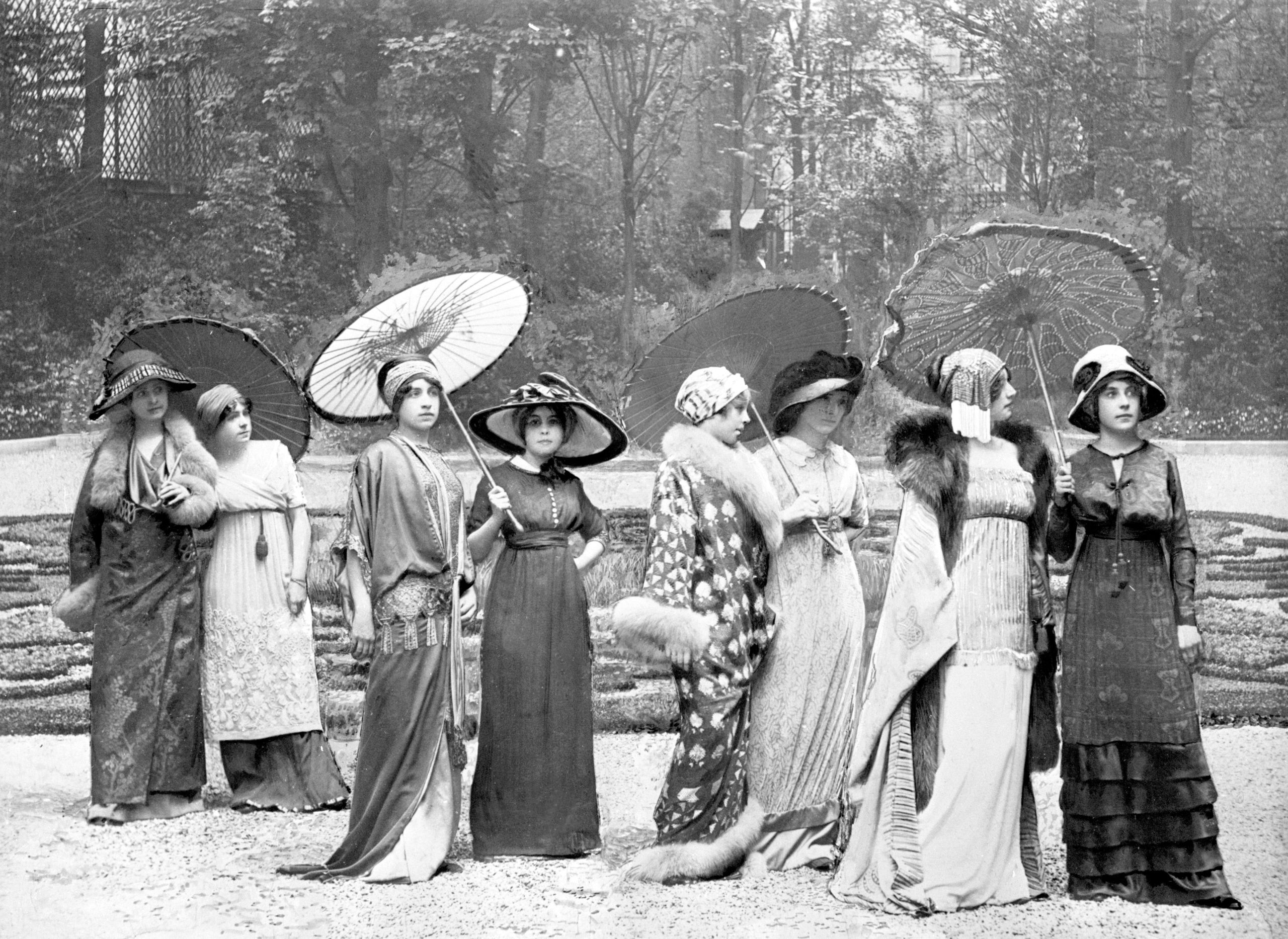
Historical photographs document early fashion shows in department stores in the USA, at horse races and on ocean liners, which gave their name to the cruise collections still shown today. A highlight of this period was the Théâtre de la Mode, a travelling exhibition created in 1945 in response to the war-induced crisis in French fashion. More than 40 Parisian couturiers presented miniature collections on elaborate wire mannequins in detailed stage sets. Several original mannequins from the Balenciaga archive bring this legendary post-war new beginning to life, complemented by film footage by photographer Tom Kublin of early Balenciaga shows from the 1960s.
The second part of the exhibition traces the period when fashion shows began to move out of the salons and into the city with the rise of prêt-à-porter fashion, and began to connect with subcultures.
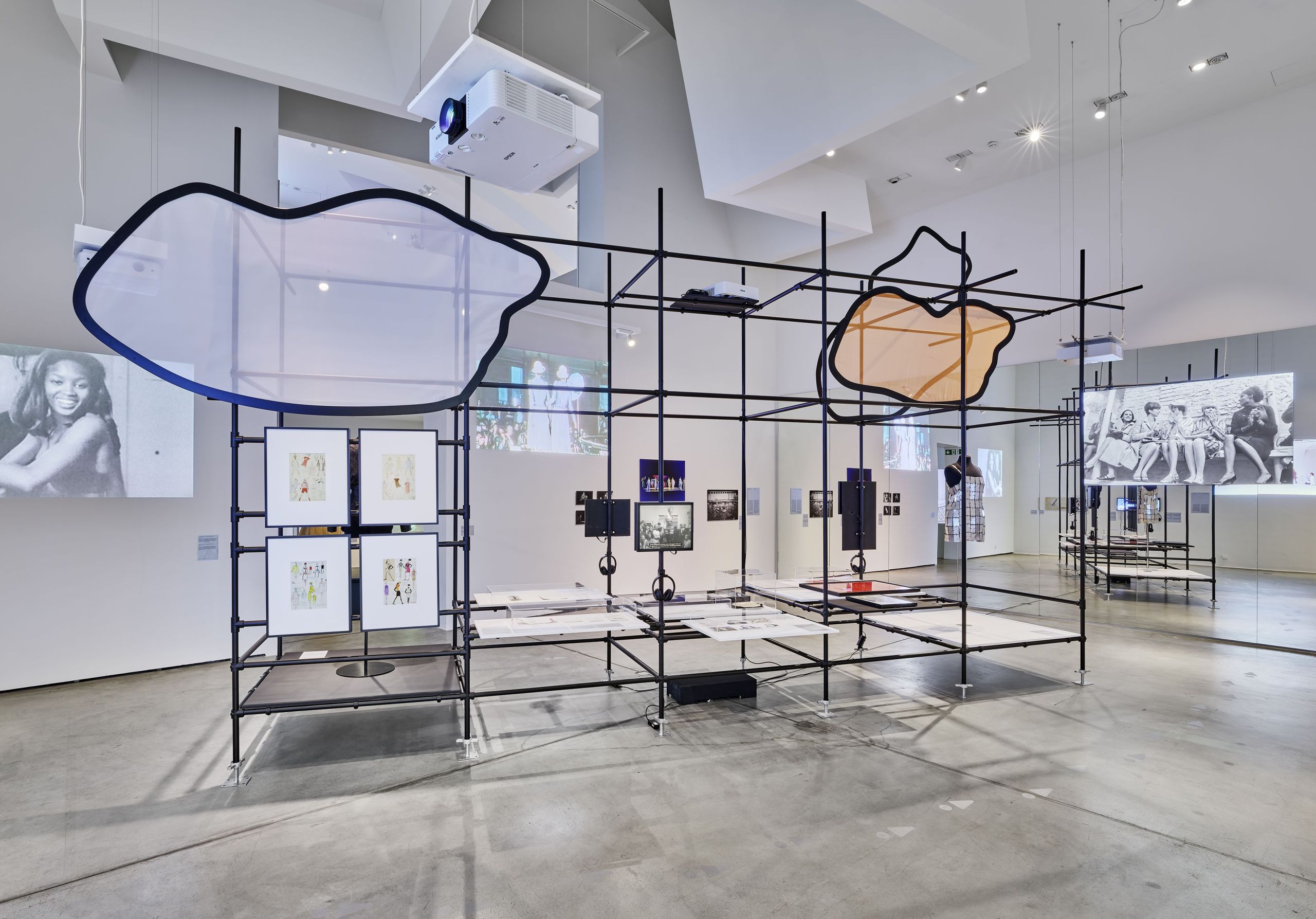
In 1958, Chloé invited guests to the famous artists’ haunt Café de Flore, designers such as Courrèges and Paco Rabanne experimented with space and movement, while Kenzo turned his shows into parties. Legendary is the so-called “Battle of Versailles”, a fashion duel between French and American designers in 1973, in which the Americans challenged the hitherto dominant French haute couture and marked the international breakthrough of US fashion.
Black models such as Pat Cleveland changed the image of the catwalk during this period, with fashion shows becoming performances and symbols of social change. Invitations to fashion shows also gained in importance and became part of the staging.
With the rise of supermodels in the 1990s, fashion shows finally achieved global visibility. A Versace show (Autumn/Winter 1991/92), in which Cindy Crawford, Naomi Campbell, Linda Evangelista and Christy Turlington sang George Michael’s hit Freedom together, became the symbol of this era.
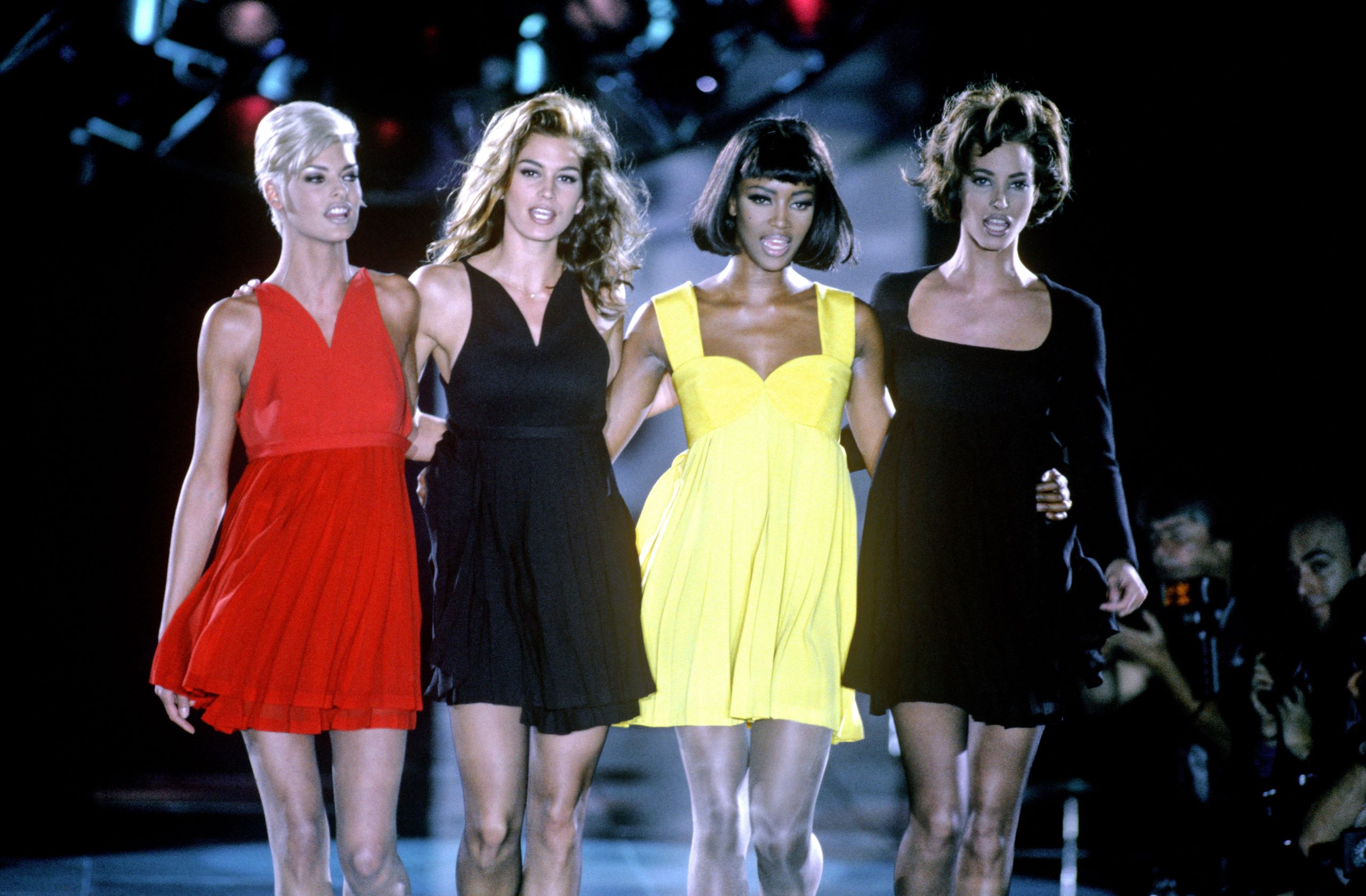
Film clips reveal the new body image that the four models are shaping: powerful, confident and glamorous. However, there are also critical examinations of the commercialisation and pressure to succeed in the fashion world: William Klein’s film “Who Are You, Polly Maggoo?” (1966) satirises the success and conflicts of an American model, while the performance “Models Never Talk” gives models a voice and lets them talk about their walk and their poses.
The third exhibition area begins at the turn of the millennium, when fashion shows became major media events thanks to increasing budgets and the power of corporations such as LVMH and Kering.
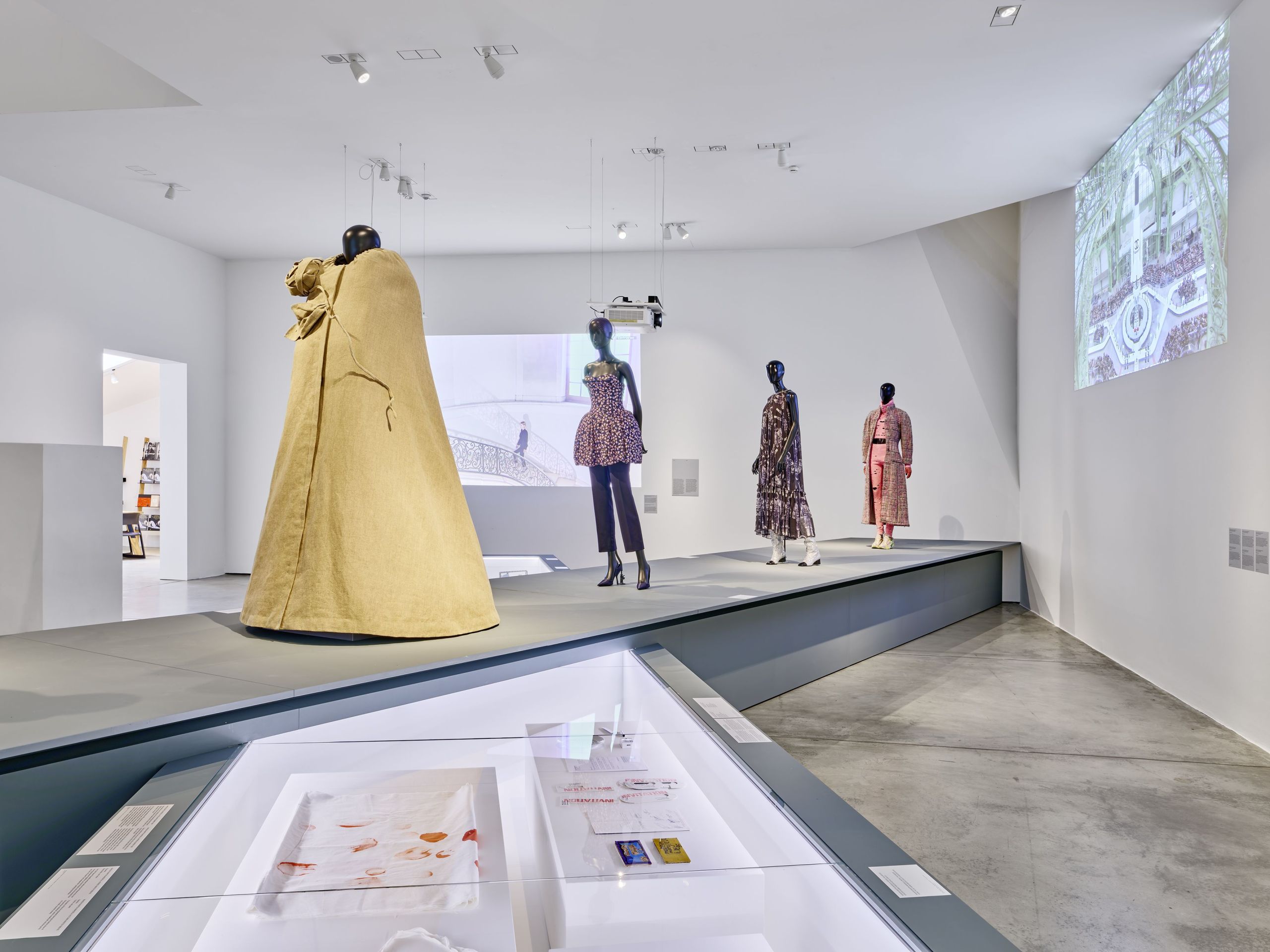
Karl Lagerfeld set new standards with Chanel by transforming the Grand Palais in Paris into spectacular venues, from a meticulously staged supermarket to a rocket launch to a demonstration march on a replica boulevard.
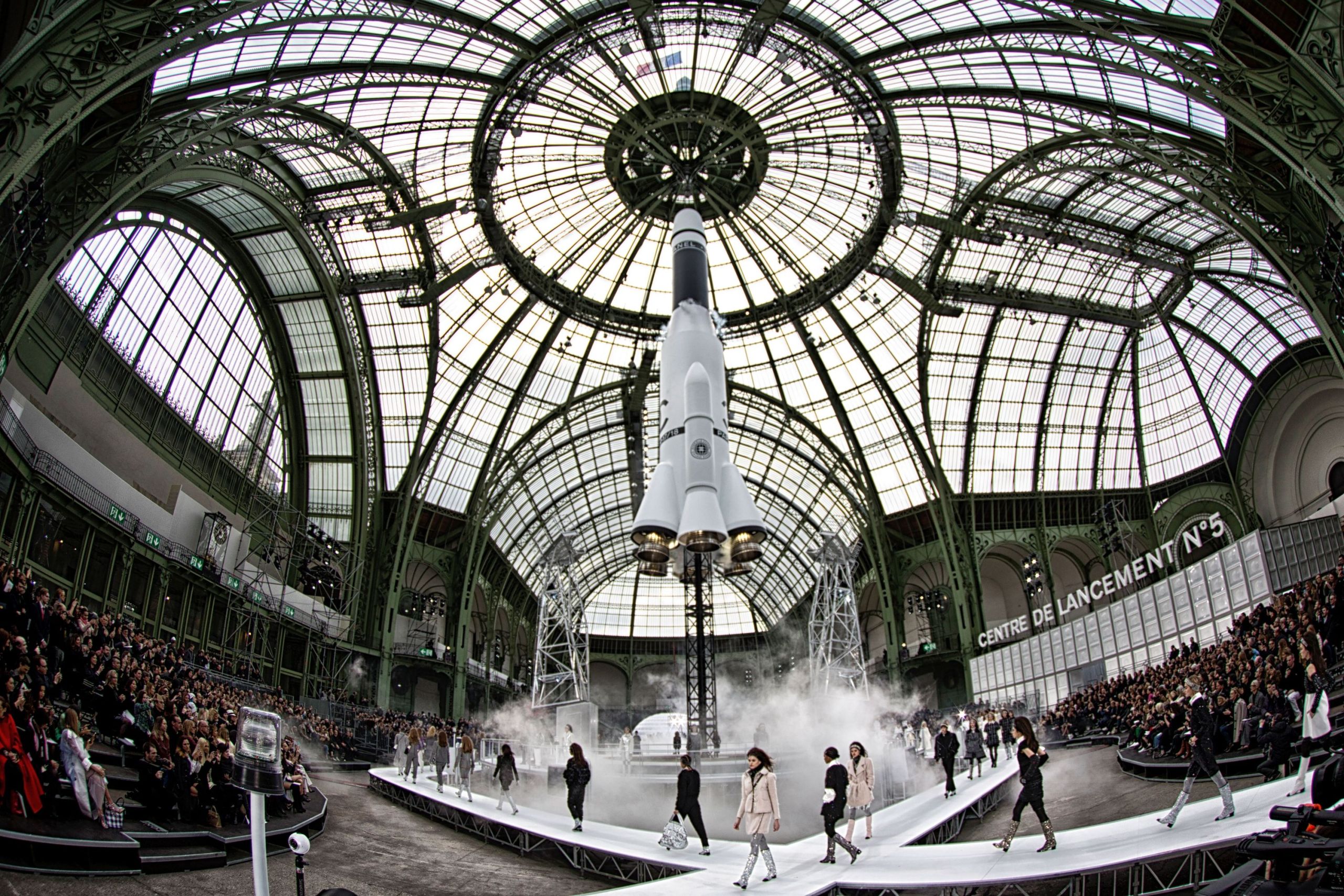
Original props and architectural models from the supermarket show (Autumn/Winter 2014/15) and the rocket show (Autumn/Winter 2018/19) illustrate the opulence of the staging. At the same time, other designers are opting for radical deconstruction: Alexander McQueen has a dress sprayed live in his show.
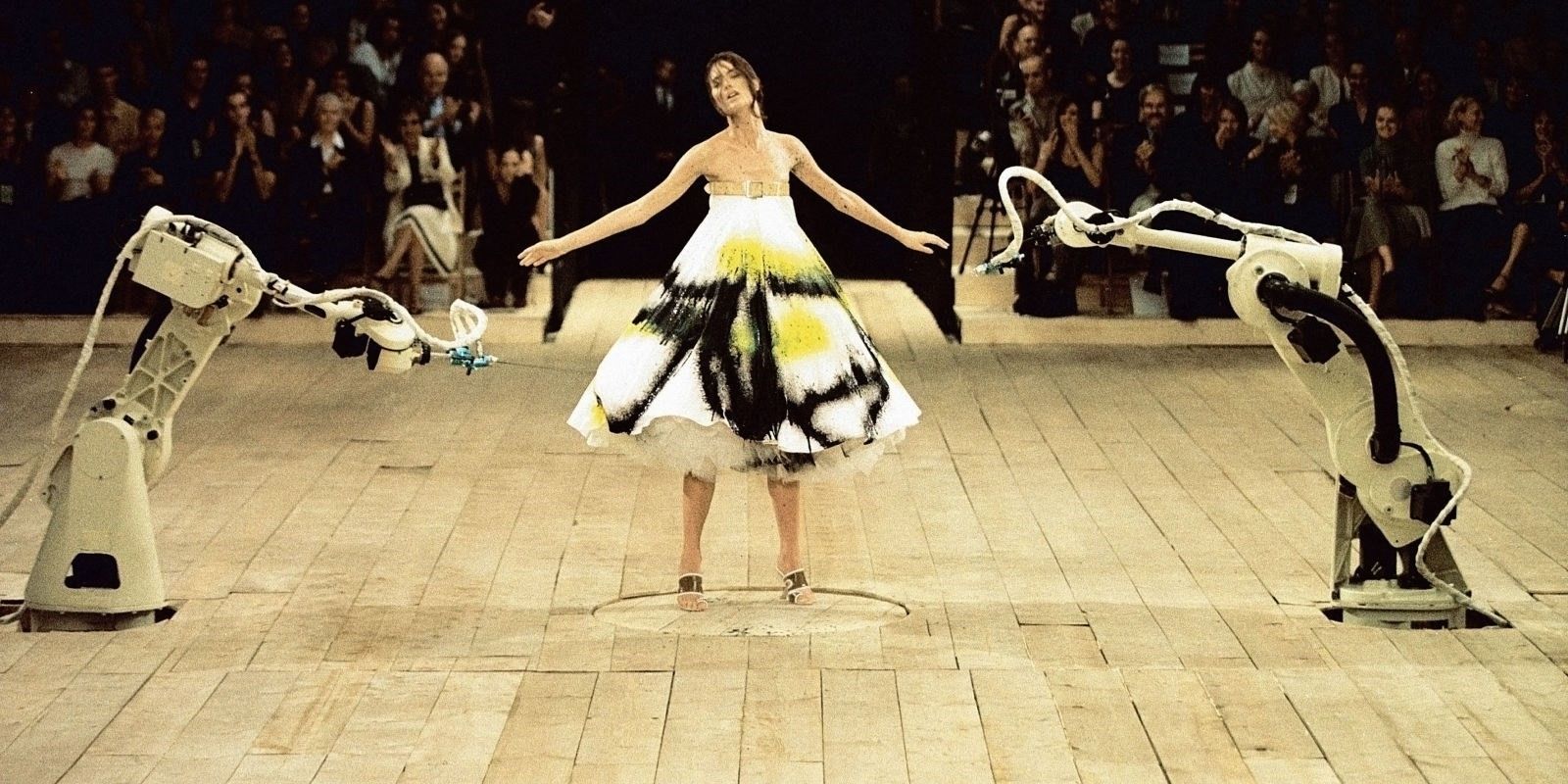
In their minimalist “Russian Doll” fashion show (Autumn/Winter 1999/2000), Viktor & Rolf dress a model in a total of nine layers of clothing. Martin Margiela moves his presentations to a car park, an empty hospital or a wasteland on the outskirts of the city. His shows are performances that leave their mark: an original model from the Spring/Summer 2006 presentation with traces of colour from a necklace made of ice cubes that melted during the show will be on display in the exhibition, as will a fabric carpet that captured the models’ coloured shoe prints (Spring/Summer 1989).
The fourth room focuses on the development of fashion shows in the recent past. Even before 2020, fashion shows were increasingly being staged with an eye to their impact in the digital space.
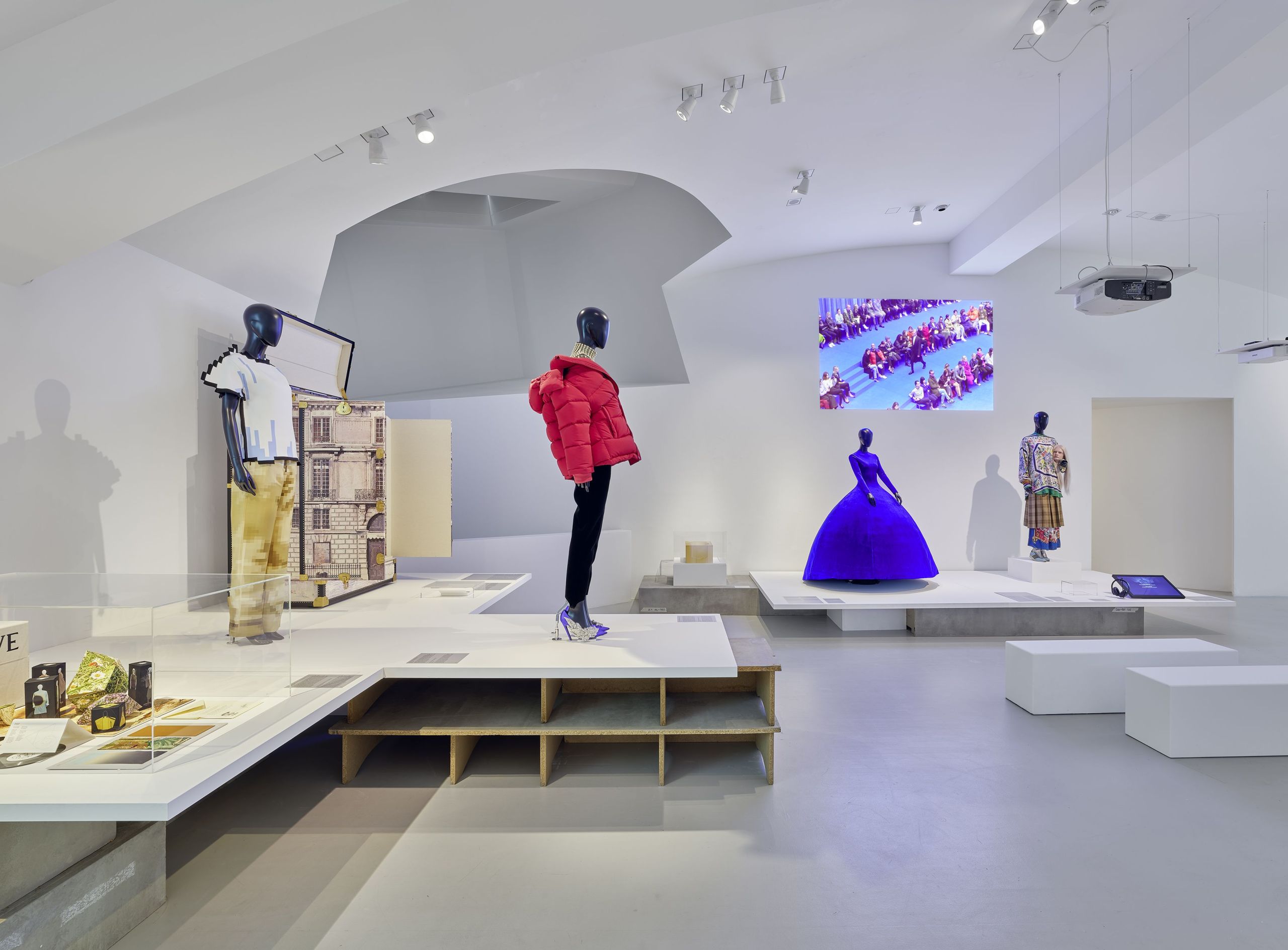
With the COVID pandemic, the number of hybrid and purely digital formats is rapidly increasing: Dior shows a miniature collection in a doll’s house in the short film “The Dior Myth” (Autumn/Winter 2020), Loewe sends out a “Show in a Box” (Spring/Summer 2021) and Balenciaga collaborates with Matt Groening to produce a Simpsons episode (Spring/Summer 2022) in which the characters from the series walk the runway. Artists and choreographers are also increasingly involved in the design of fashion shows: Issey Miyake is presenting “One Minute Sculptures” by Erwin Wurm (Spring/Summer 2025), while Sharon Eyal has created a dance performance (Spring/Summer 2019) to accompany a Dior show.
The connection to architecture
The exhibition highlights the close connection between the medium of fashion shows and architecture, citing, among other things, the collaboration between Rem Koolhaas’ Studio OMA and Prada, which has been ongoing for over 25 years. Also on display is a skyline jacket created by Virgil Abloh, modelled on famous skyscrapers. It was originally shown during the Louis Vuitton menswear presentation for autumn/winter 2021/22 in a setting inspired by Mies van der Rohe.
Practical information
The exhibition at the Vitra Design Museum at Charles-Eames-Str. 2 in D-79576 Weil am Rhein runs until 15 February 2026. It is open daily from 10 a.m. to 6 p.m.; on 24 December from 10 a.m. to 2 p.m.
A visit to “Catwalk” can be combined with the exhibition “Science Fiction Design. From Space Age to Metaverse” and the exhibition on the American architect Barragán, both at the Vitra Schaudepot. The interior design exhibition at the Vitra Haus by Herzog & de Meuron allows you to experience Vitra’s great classics and the latest designs by contemporary designers through furniture arrangements in different styles.
Accompanying the exhibition is a richly illustrated, 300-page catalogue designed as an A–Z of the fashion show. It features contributions from protagonists such as model Małgosia Bela, sound supervisor Michel Gaubert and buyer Andreas Murkudis, as well as experts such as Caroline Evans, Cathy Horyn and Valerie Steele.